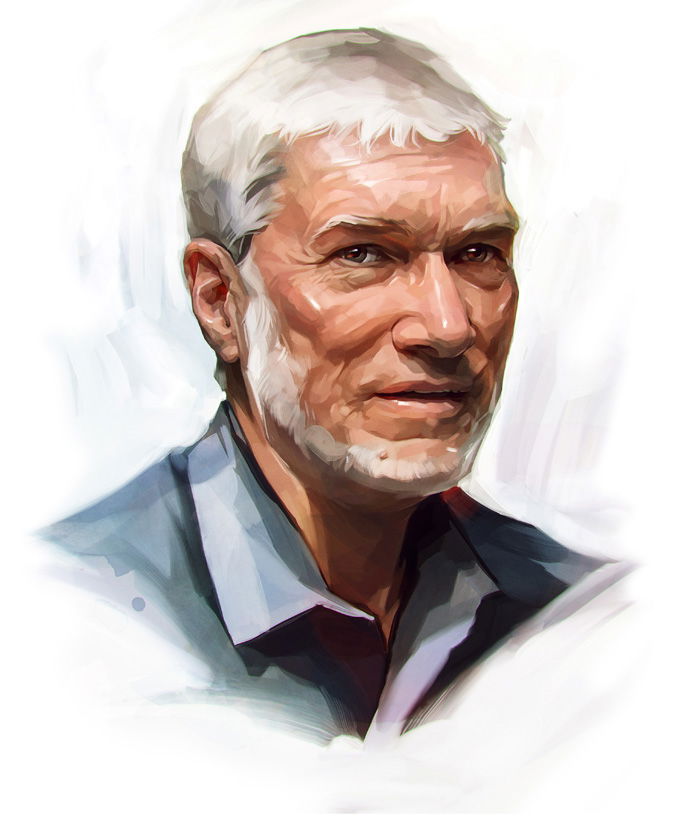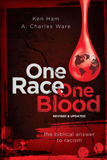The Big Four
Four big debates rage in our world today. The foundational answers are in Genesis 1–11.

Illustration by Viktor Miller-Gausa
Ken Ham
Founder and CEO
Answers in Genesis
It’s important at times to look back at the circumstances and people God allowed to be part of one’s calling in life.
As I look back, it’s fascinating to recognize how the Lord burdened me to deal with four major issues that have become integral to the outreach of Answers in Genesis, the Creation Museum, and the Ark Encounter, which are encouraging so many believers and challenging lost people with the gospel.
At the Creation Museum, we walk people through seven C’s: Creation, Corruption, Catastrophe, Confusion, Christ, Cross, and Consummation. The first four C’s cover the astronomical, geological, biological, and anthropological history foundational to all Christian doctrine, including the gospel.
Creation
In 1975, I began my career as a public-school science teacher in Queensland, Australia. I remember a student saying: “Sir, we heard you’re a Christian . . . but how can you believe the Bible? We know it’s not true.”
“How do you know it’s not true?” I asked.
The student responded, “Because our science textbooks tell us that the universe and life evolved over millions of years.”
Right then, the Lord gave me a burden to teach students how to think correctly about science and origins. I taught them the difference between observational science and historical science.
Right then, the Lord gave me a burden to teach students how to think correctly about science and origins. I taught them the difference between observational science (using one’s five senses in the present—the sort of science that builds technology) and historical science (study of origins—the unobservable past).
When evolution came up, I helped students understand that all evidence exists in the present, and that molecules-to-man evolution is a belief about the past. I also showed many examples of observational science that confirm the Bible’s history concerning Creation and the Flood. Really, I was developing an understanding of the first C—Creation.
Catastrophe
When fossils came up in class, I talked about Noah’s Flood being responsible for most of the fossil record. I recall a student telling me Noah couldn’t fit all the animals on the Ark. But because I had read The Genesis Flood and other resources, I was able to explain that representative kinds of land animals—not all the species in man’s classification system—went onto the Ark. I was actually dealing with that third C—Catastrophe.
Confusion
When human evolution had to be covered, I made sure students understood that all humans belong to one race because we are all descendants of Adam and Eve. (The secular world later confirmed with observationalscience what the Bible teaches, when the Human Genome Project showed, in 2000, there’s only one race.)
I explained back then that all humans are related and how, as a result of the Tower of Babel, different people groups formed with different cultures. And I made sure they understood the supposed evidence for ape-men was not fact, but a story imposed on the bones. I was really covering the fourth C—Confusion.
Some aboriginal students (Australia’s indigenous people) stayed after class and excitedly asked me more details. They loved what I had taught. Sadly, many people (including fellow students) had been taught the Australian aborigines were closely related to ape-like ancestors, and were even evolutionary missing links.
The Lord really burdened me concerning these students, and ever since, I have spoken on racism and prejudice to show people that humans are all one race—all descendants of Adam, all equal before God. All are sinners and all need salvation.
Corruption
I gave my first creation apologetics presentation in a church in 1975. Mainly I discussed how science confirms the Bible and the problems with the evolution story. I continued to share this message over the next few years. But I kept receiving one question: why does it matter if Christians believe in evolution?
I had a Genesis commentary by Dr. Henry Morris, The Genesis Record, which laid out how all Christian doctrines are ultimately founded in Genesis. I also had a small booklet from England explaining that death, bloodshed, and disease could not have existed before Adam sinned. My father had also taught me how foundational the history in Genesis is to the gospel of Jesus Christ and to all doctrine.
So using all this information, I developed the “Relevance of Genesis” message that has become the backbone of Answers in Genesis. I was developing more understanding how the first C, Creation, relates to the second C, Corruption (the entrance of death and suffering).
The first time I gave this relevance message in a church, people said they had never heard this before and realized they needed to take a stand on a literal Genesis and reject evolution.
Over the years we have developed much more understanding of those first four C’s, but the basic message is still the same: “The history in Genesis 1–11 is true. That’s why the gospel based in that history is true.”
Or we could say: “The first four C’s are true. That’s why the Christian message based in them is true.” Yes, the Big Four are vitally important.
Answers Magazine
November–December 2017
Dr. John Whitcomb explains the timeless truths that will help us reach the next generation with God’s message of redemption.
Browse IssueRecommended Resources

Answers in Genesis is an apologetics ministry, dedicated to helping Christians defend their faith and proclaim the good news of Jesus Christ.
- Customer Service 800.778.3390
- Available Monday–Friday | 9 AM–5 PM ET
- © 2026 Answers in Genesis






